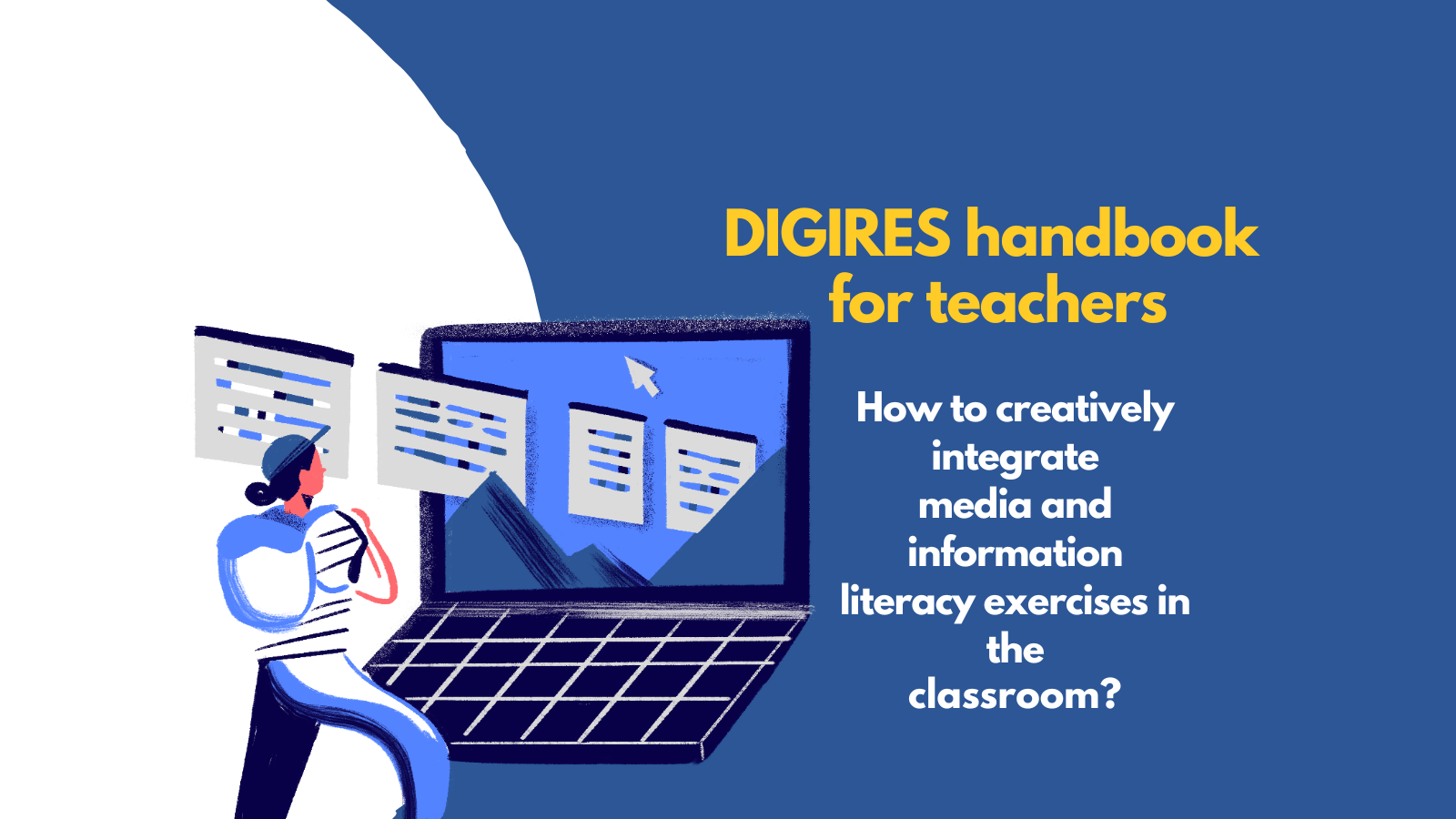 Back
Back

DIGIRES is expanding the circle of its knowledge sharing – from now on, the “DIGIRES Handbook for Teachers: How to Creatively Integrate Media and Information Literacy Exercises In the Classroom?” is available in as many as eight languages.
In order to meet the needs of national minorities and expand beyond Lithuania and the Baltic States, the exercises created by the DIGIRES media literacy and media expert team and developed and practically tested during the international project BECID (Baltic Center for Combating Information Disorders) have been translated from Lithuanian into English, Latvian, Estonian, Ukrainian, Georgian, Azerbaijani and Russian.
DIGIRES handbook for teachers is a set of systematic, innovative and engaging practical exercises with examples and detailed scenarios that can be easily adapted to lessons in various subjects and do not require much advance preparation.
DIGIRES methods are designed to engage and empower all participants to think, question information appearing in the public space, and also encourage them to step out of their comfort zone, because that is when real learning takes place.
The handbook consists of four lessons with four integrated methods.
1) In the lesson Text comprehension: did you know that we read vertically? the Lateral Reading method is used to learn to recognize elements of a reliable source, evaluate textual and visual information in terms of reliability. This lesson develops text analysis and attention to detail skills, and promotes slower content consumption.
2) In the lesson Surrounded by media: the role of information objects in everyday life the interactive activity Media Walkshop is used, encouraging to notice and recognize the media world around us, and to understand the significance of information and media objects in our everyday environment.
3) In the lesson Bias thinking: why is it dangerous? an interactive activity Categorizing Opinions is used, helping to understand how dichotomous thinking and categorizing things as “black” or “white” divides society and pushes it towards confrontation, polarization, and hate speech.
4) In the lesson Information search: how do we survive under uncertainty? the method Understanding Uncertainty is applied, which allows you to get to know your emotions, behavior and information-seeking methods in conditions of uncertainty, developing resistance to manipulation and information disruptions, such as disinformation, fake news or propaganda, which are especially evident during times of crisis and in situations of uncertainty.
The practical tasks consist of a detailed “step-by-step” plan, tips and recommendations, and discussion questions that will fully assist the teacher in preparing for media literacy lessons promptly and efficiently.
All the methods can be found here.